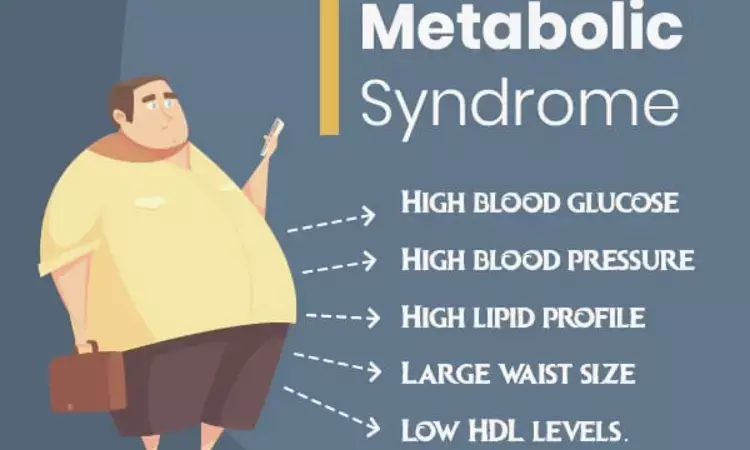- Home
- Medical news & Guidelines
- Anesthesiology
- Cardiology and CTVS
- Critical Care
- Dentistry
- Dermatology
- Diabetes and Endocrinology
- ENT
- Gastroenterology
- Medicine
- Nephrology
- Neurology
- Obstretics-Gynaecology
- Oncology
- Ophthalmology
- Orthopaedics
- Pediatrics-Neonatology
- Psychiatry
- Pulmonology
- Radiology
- Surgery
- Urology
- Laboratory Medicine
- Diet
- Nursing
- Paramedical
- Physiotherapy
- Health news
- Fact Check
- Bone Health Fact Check
- Brain Health Fact Check
- Cancer Related Fact Check
- Child Care Fact Check
- Dental and oral health fact check
- Diabetes and metabolic health fact check
- Diet and Nutrition Fact Check
- Eye and ENT Care Fact Check
- Fitness fact check
- Gut health fact check
- Heart health fact check
- Kidney health fact check
- Medical education fact check
- Men's health fact check
- Respiratory fact check
- Skin and hair care fact check
- Vaccine and Immunization fact check
- Women's health fact check
- AYUSH
- State News
- Andaman and Nicobar Islands
- Andhra Pradesh
- Arunachal Pradesh
- Assam
- Bihar
- Chandigarh
- Chattisgarh
- Dadra and Nagar Haveli
- Daman and Diu
- Delhi
- Goa
- Gujarat
- Haryana
- Himachal Pradesh
- Jammu & Kashmir
- Jharkhand
- Karnataka
- Kerala
- Ladakh
- Lakshadweep
- Madhya Pradesh
- Maharashtra
- Manipur
- Meghalaya
- Mizoram
- Nagaland
- Odisha
- Puducherry
- Punjab
- Rajasthan
- Sikkim
- Tamil Nadu
- Telangana
- Tripura
- Uttar Pradesh
- Uttrakhand
- West Bengal
- Medical Education
- Industry
TyG-waist to height ratio strong predictor of metabolic syndrome, reveals study

China: The product of triglycerides and glucose index (TyG) and waist-to-height ratio (WHtR) was shown to be a strong and independent predictor for metabolic syndrome (Mets) in an urban Chinese population, says a recent study with a follow-up of 15 years. The findings revealed that TyG-related risk factors that combine obesity measures with the TyG index are superior to other parameters in identifying metabolic syndrome in both genders.
The study was published on Research Square as a preprint that has not yet been peer-reviewed and is under consideration at Diabetology & Metabolic Syndrome.
Metabolic syndrome is characterized by hypertension, abdominal obesity, abnormal glucose metabolism, dyslipidemia, or previously diagnosed type 2 diabetes. It is associated with an elevated risk for atherosclerosis and cardiovascular disease. The TyG index that combines fasting plasma glucose and fasting triglycerides is a potential surrogate marker for insulin resistance -- a major player in the development of Mets.
Recent research has focused on the predictive value of bundled parameters including the product of the TyG index when combined with waist circumference (TyG-WC), waist-to-hip ratio (TyG-WHpR), or waist-to-height ratio (TyG-WHtR).
Considering the above, Xin Zhang, West China School of Medicine: Sichuan University West China Hospital, China, and colleagues aimed to assess the association of the Mets with TyG index and TyG-related parameters in an urban Chinese population.
For this purpose, the researchers collected data in 1992 and then again in 2007 from the same group of 590 individuals (363 males and 227 females ) without Mets in 1992.
The findings of the study were as follows:
- During 15 years' follow-up, TyG-waist to height ratio (TyG-WHtR) shows the largest AUC for MS detection (0.686) followed by TyG-waist circumference (TyG-WC) (0.660), TyG-waist-to-hip ratio (TyG-WHpR) (0.564), and TyG index (0.556) in all participants. Gender analysis revealed that TyG-WHtR and TyG-WC have the largest AUC in both genders.
- TyG-WHtR significantly predicted Mets in all participants, with an unadjusted odds ratio of 5.63.
- Associations remained significant after adjustment for smoking, drinking, physical exercise, and components of Mets.
To sum up, the product of the TyG and WHtR accounted for 68.6% of the risk for metabolic syndrome (area under the receiver operating characteristic curve [AUC] of 0.686) in an urban Chinese population.
Reference:
The preprint research study titled, "Association of metabolic syndrome with TyG index and TyG-related parameters in an urban Chinese population: a 15-year prospective study," was published in Research Square.
DOI: 10.21203/rs.3.rs-1375029/v1
KEYWORDS: Research Square, metabolic syndrome, obesity, waist to hip ratio, waist circumference, TyG index, cardiovascular disease, hypertension, Xin Zhang, Diabetology & Metabolic Syndrome
Dr Kamal Kant Kohli-MBBS, DTCD- a chest specialist with more than 30 years of practice and a flair for writing clinical articles, Dr Kamal Kant Kohli joined Medical Dialogues as a Chief Editor of Medical News. Besides writing articles, as an editor, he proofreads and verifies all the medical content published on Medical Dialogues including those coming from journals, studies,medical conferences,guidelines etc. Email: drkohli@medicaldialogues.in. Contact no. 011-43720751


